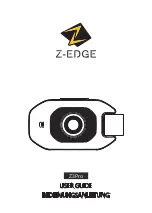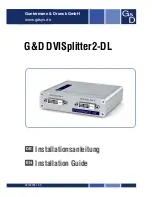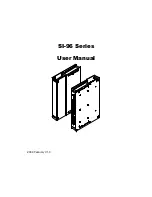
134
EN
13
In
fo
rmatio
n
Compression rate
Compression is a method of reducing file size by abbreviating some contents of data, and
compression rate denotes the amount of compression. The actual effect of the selected
compression rate could vary with the content of the image. The numbers for the compression
rate selected with this camera provide only a general scale for reference and are not precise
measurements.
DCF (Design rule for Camera File system)
A standard for image files by the Japan Electronics and Information Technology Industries
Association (JEITA).
Depth of Field
Depth of Field refers to the distance from the nearest to the furthest point of perceived “sharp”
focus in a picture.
Digital ESP (Electro-Selective Pattern) Light Metering
This determines the exposure by splitting the image into 49 areas and metering and
calculating the light levels in each area.
DPOF (Digital Print Order Format)
This is for saving desired print settings on digital cameras. By entering which images to print
and the number of copies of each, the user can easily have the desired images printed by a
printer or print lab that supports the DPOF format.
Eclipsing (Vignetting)
This refers to when an object obscures part of the field of view so that the whole subject is not
photographed. Vignetting also refers to when the image seen through the viewfinder does not
exactly match the image shot through the objective lens, so the photographed image includes
objects not seen through the viewfinder. In addition, vignetting can occur when an incorrect
lens hood is used, causing shadowing to appear in the corners of the image.
EV (Exposure Value)
A system for measuring exposure. EV0 is when the aperture is at F1 and the shutter speed is
1 second. The EV then increases by 1 each time the aperture increases by one F stop or the
shutter speed increases by one increment. EV can also be used to indicate brightness and
ISO settings.
Exposure
The amount of light used to capture an image. The exposure is determined by the length of
time the shutter is open (shutter speed) and the amount of light that passes through the lens
(aperture).
Image pickup device
This converts light passing through the lens into electrical signals. On this camera, light is
picked up and converted into RGB signals to build a single image.
Imager contrast detection system
Focusing method based on the contrast of the image of the subject captured on the image
pickup device.
ISO
International abbreviation for International Organization for Standardization. The sensitivity
setting used in digital cameras is based on the same ISO standard used for film sensitivity.
The sensitivity is denoted as shown in “ISO 100”. Higher ISO values indicate greater
sensitivity to light, so images can be exposed even in low-light conditions.
JPEG (Joint Photographic Experts Group)
A compression format for color still images. Photographs (images) shot using this camera are
recorded onto the card in JPEG format when the Record mode is set to a setting other than
[RAW]
. By downloading these images to a personal computer, users can edit them using
graphics application software or view the images using an Internet web browser.
M
(Manual) Mode
The user sets both the aperture and shutter speed.
s0018_e_00_0_unified.book Page 134 Tuesday, March 18, 2008 4:08 PM















































